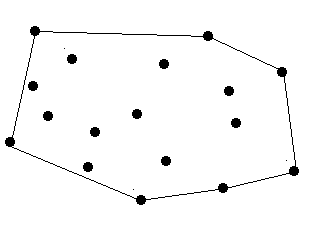算法面试题深度解析:LeetCode2012.数组元素的美丽值求和计算与多方案对比原题给你一个下标从0开始的整数数组nums。对于每个下标i(1nums[i];1分:不满足2分条件,但满足nums[i-1]
程序化交易的未来趋势:API技术将如何演进?
云策量化
程序化炒股Deepseek量化投资Python程序化交易PTradeQMT量化交易量化股票deepseek
推荐阅读:《程序化炒股:如何申请官方交易接口权限?个人账户可以申请吗?》程序化交易的未来趋势:API技术将如何演进?引言程序化交易,也称为算法交易,是金融市场中使用计算机算法自动执行交易指令的一种方式。随着技术的不断进步,API(应用程序编程接口)在程序化交易中扮演着越来越重要的角色。本文将探讨API技术在程序化交易中的未来趋势,以及它们将如何演进以适应市场的需求。当前API技术在程序化交易中的应
信创国产芯片如何推动自主可控生态建设
程序员
信创国产芯片作为信息技术创新的核心领域,对于推动国家自主可控生态建设具有至关重要的意义。在全球科技竞争日益激烈的背景下,实现信息技术的自主可控,摆脱对国外技术的依赖,已成为保障国家信息安全和产业可持续发展的关键。国产芯片作为信创产业的基石,其发展水平直接影响着整个信创生态的构建与完善。通过不断提升国产芯片的技术实力、产业规模和应用水平,可以为自主可控生态建设提供坚实的支撑,推动我国信息技术产业实现
金融行业信创落地:5大核心系统+3类项目管理工具选型
程序员
随着信息技术的快速发展,金融行业的信息化建设已成为提升竞争力的关键。信创(信息技术应用创新)作为我国信息技术产业发展的重要战略,对于金融行业的安全、自主可控具有重要意义。本文将探讨金融行业信创落地的关键,包括5大核心系统以及3类项目管理工具的选型。金融行业信创的重要性金融行业作为国家经济的核心领域,其信息系统的安全性和稳定性至关重要。信创的实施有助于提升金融行业的信息安全水平,降低对国外技术的依赖
2.数据结构-栈和队列
这一wa是晚安
数据结构-考研数据结构
数据结构-栈和队列2.1栈2.1.1栈的表示和实现2.1.2栈的应用举例数制转换括号匹配检验迷宫给求解表达式求值2.1.3链栈的表示和实现2.1.4栈与递归的实现遍历输出链表中各个结点的递归算法*Hanoi塔问题的递归算法2.2队列2.2.1循环队列——队列的顺序表示和实现2.2.2链队——队列的链式表示和实现2.1栈栈是限定仅在表尾进行插入或删除操作的线性表,因此,对栈来说,表尾端有其特殊含义,
【蓝桥杯备赛】Day12:贪心算法
凯强同学
蓝桥杯蓝桥杯贪心算法python
题目1:题目2518:信息学奥赛一本通T1620-质因数分解原题来自:NOIP2012普及组已知正整数n是两个不同的质数的乘积,试求出较大的那个质数。输入格式输入只有一行,包含一个正整数n输出格式输出只有一行,包含一个正整数p,即较大的那个质数。样例输入21样例输出7python代码importmathn=int(input())j=int(math.sqrt(n))foriinrange(2,j
AI 界的包青天:GaussianNB 智断分类难题
星际编程喵
人工智能分类数据挖掘
前言在机器学习的江湖中,分类算法纷繁复杂,各具特色。有的深不可测,犹如隐世高人的内功心法,让人望而却步;有的则像街头小贩,简单直接却也能精准解决问题。江湖中高手云集,其中有一位侠客,宛如包青天,正气凛然,以公正无私和高效迅捷著称,擅长快速解决分类难题。此侠客正是GaussianNaïveBayes(高斯朴素贝叶斯,简称GaussianNB)。凭借朴素的假设与强大的数学支撑,GaussianNB在分
DunTrust:网络安全服务商
https
一、介绍合DunTrust是专业的https安全方案服务商,官网网址:www.yundunssl.cn携手全球数家权威知名SSL证书厂商,加速https安全技术在中国普及应用。DDunTrus致力于互联网数据安全服务与网络开发业务,现已成为网络安全专业服务商,在行业占据一席之地。公司专业服务团队服务水平业内领先,满足企业对于互联网数据安全的切实需求。二、证书品牌DunTrust是国内知名的安全服务
股票型ETF与债券型ETF的区别及现阶段最低佣金水平分析
vx_stockmasterx
经验分享笔记
交易所交易基金(ETF)是一种在证券交易所上市交易的投资工具,其本质是一个资产组合,包含股票、债券或商品等多种标的。投资者通过购买ETF份额,可以间接持有该组合中的资产比例,它与传统共同基金相比,ETF的优势在于交易灵活性更高,投资者可以在交易日内像买卖股票一样自由交易,而无需等待交易日结束,因此受到市场的广泛欢迎。股票型ETF以股票为主要投资对象,通常追踪某一股票指数,例如美国的纳斯达克100指
全面解析RRU软件可测性设计引入AI算法的实践
youngerwang
测试验证之禅道射频移动pythonpytorch信息与通信集成测试测试覆盖率开源
文章目录全面解析RRU软件可测性设计引入AI算法的实践本文概要整体架构流程一、引言二、具体思想点2.1智能测试用例生成2.2异常检测与定位三、落地要求3.1数据基础3.2算法与模型3.3系统集成四、检查评估项4.1测试用例生成评估4.2异常检测与定位评估5AI算法设计和框架应用5.1.算法设计思路5.2.模型设计5.3.用例设计训练数据准备模型训练全面解析RRU软件可测性设计引入AI算法的实践本文
python学智能算法(七)|KNN邻近算法
西猫雷婶
人工智能python学习笔记算法
【1】引言前述学习进程中,已经了解了一些非常经典的智能算法,相关文章包括且不限于:python学智能算法(三)|模拟退火算法:深层分析_模拟退火动画演示-CSDN博客python学智能算法(四)|遗传算法:原理认识和极大值分析_遗传算法和模拟退火时间复杂度-CSDN博客python学智能算法(五)|差分进化算法:原理认识和极小值分析-CSDN博客python学智能算法(六)|神经网络算法:BP神经
从公布的11批其他算法类别分析
老赵聊算法、大模型备案
人工智能机器人算法AIGC语言模型
2025年3月12日,国家网信办分别发布了深度合成算法及互联网信息服务算法备案信息(其他类别算法)的公告,其中深度合成算法3月份批次通过共计395款,其他算法种类通过45款。具体分析如下:一、算法类别:序号算法类别数量占比1个性化推送类31749%2检索过滤类20431.53%3排序精选类578.81%4调度决策类599.12%5生成合成类101.55合计jxh152637647100%从算法类别
图像去雾常见数据集
梦姐的编程日志
图像处理深度学习人工智能
近年来,随着深度学习技术的快速发展,图像去雾任务成为计算机视觉领域的重要研究方向之一。高质量的数据集是算法研究的基础,本文将介绍一些常用的图像去雾数据集,包括其特点、应用场景以及下载地址。1.RESIDE数据集RESIDE(REalisticSingleImageDEhazing)数据集是目前最常用的图像去雾数据集之一。该数据集提供了多种规模的子数据集,主要分为以下几部分:IndoorTraini
【图像去雾】基于多尺度Retinex实现图像去雾附Matlab代码
Matlab科研辅导帮
图像处理matlab开发语言
✅作者简介:热爱数据处理、建模、算法设计的Matlab仿真开发者。更多Matlab代码及仿真咨询内容点击:Matlab科研工作室个人信条:格物致知。内容介绍1.引言雾霾天气严重影响了人们的生活和工作,对图像的清晰度也造成了极大的破坏。图像去雾技术旨在消除图像中的雾霾,恢复图像的真实色彩和细节,在交通监控、遥感成像、医学影像等领域具有广泛的应用价值。近年来,基于Retinex理论的图像去雾方法取得了
点云从入门到精通技术详解100篇-基于激光雷达点云的三维目标检测
格图素书
目标检测人工智能计算机视觉
目录前言图像目标检测算法研究现状点云目标检测算法研究现状基于投影图的方法基于体素的方法基于点云的多模态融合方法2地面点云滤波及神经网络2.1目标检测数据集及采集设备2.1.1KITTI数据集2.1.2车载激光雷达2.2地面点云滤波算法2.2.1RANSAC算法2.2.2CSF算法本文篇幅较长,分为上下两篇,下篇详见基于激光雷达点云的三维目标检测(续)前言近几年来,在计算机视觉领域,利用深度学习卷积
图像识别技术与应用
超帅的好吧
笔记
第一节课这节课了解了这门专业的就业职位:工资是怎么样的岗位职责和任职要求看到了人类工业文明的演变了解了人工智能的研究、开发、模拟、延伸、理论、方法和技术看到了生活方式的转变比如智能语音闹钟控制系统、自动驾驶和人脸识别考勤智能购物、医疗日常生活的智能比如指纹、淘宝、抖音还能用软件看到天气的好坏了解了典型训练和机器学习中的关键组件机器学习中的关键组件包含:数据模型目标函数优化算法这节课学习了第一节剩下
3.孤岛的总面积
六便士460
代码随想录之图论题解图论算法广度优先
题目描述给定一个由1(陆地)和0(水)组成的矩阵,岛屿指的是由水平或垂直方向上相邻的陆地单元格组成的区域,且完全被水域单元格包围。孤岛是那些位于矩阵内部、所有单元格都不接触边缘的岛屿。现在你需要计算所有孤岛的总面积,岛屿面积的计算方式为组成岛屿的陆地的总数。输入描述第一行包含两个整数N,M,表示矩阵的行数和列数。之后N行,每行包含M个数字,数字为1或者0。输出描述输出一个整数,表示所有孤岛的总面积
JVM 详解:Java 虚拟机的核心机制
一点多余.
jvm
目录引言:为什么JVM是Java生态的基石?一、什么是JVM?1.1JVM的核心作用二、JVM的架构2.1类加载器(ClassLoader)2.2运行时数据区(RuntimeDataAreas)2.3执行引擎(ExecutionEngine)2.4本地方法接口(JNI)三、JVM的工作原理3.1类加载过程3.2字节码执行3.3垃圾回收四、JVM的垃圾回收机制4.1垃圾回收算法4.2垃圾回收器五、J
【梯度下降算法】
蝉叫醒了夏天
机器学习算法
梯度下降算法:第一章梯度下降的历史沿革1.1优化方法的演进脉络从17世纪牛顿时代的数值解法,到20世纪最优控制理论的发展,直至现代机器学习对优化算法的特殊需求,梯度下降算法在数学优化史上占据重要地位。1947年FrankRosenblatt在感知机研究中首次系统应用梯度下降思想1.2机器学习时代的复兴21世纪深度学习革命使梯度下降算法获得新生:2006年Hinton团队在深度信念网络中的突破应用2
jmeter-AES加密
ramsey17
jmeterjava
AES(全称:AdvancedEncryptionStandard)对称加密算法,也就是加密和解密用到的密钥是相同的,这种加密方式加密速度非常快,适合经常发送数据的场合,如:数据加密存储、网络通信加密等。在进行接口测试或接口压测时,有些比较核心的接口有可能会用AES方式对接口的入参或响应内容进行加密/解密。Jmeter对AES加密/解密,当前可以通过beanshell的方式处理。代码如下:impo
从青铜到王者:六大排序算法实战解析
AAEllisonPang
Pythonpython算法排序算法
前言在编程的世界里,排序算法如同一颗璀璨的明珠,闪耀着智慧的光芒。它不仅是计算机科学的基础知识点,更是每一位程序员必备的技能。今天,就让我们一同走进排序算法的世界,深入探究冒泡排序、选择排序、插入排序、快速排序、归并排序、堆排序这六大经典算法的精髓所在,为你提供一份全面、深入、实用的指南。一、冒泡排序:简单易懂的入门算法冒泡排序是一种简单直观的排序算法,它重复地走访过要排序的数列,依次比较相邻的两
十大排序算法
迷茫的羔羊羊
数据结构与算法排序算法算法数据结构
1.冒泡排序(BubbleSort)冒泡排序重复地走访过要排序的数列,一次比较两个元素,如果它们的顺序错误就把它们交换过来,直到整个数列有序。publicclassBubbleSort{publicstaticvoidbubbleSort(int[]arr){intn=arr.length;//外层循环控制排序的轮数for(inti=0;iarr[j+1]){//交换arr[j]和arr[j+1]
【经典游戏】Java实现俄罗斯方块小游戏(附源码)
枫蜜柚子茶
小游戏java开发语言游戏
一、需求分析俄罗斯方块(Tetris)是一款经典的益智类电子游戏,最初由俄罗斯设计师AlexeyPajitnov于1984年创建。该游戏的目标是通过移动、旋转和适当摆放下落的不同形状的方块,使它们在底部组成完整的水平线,一旦一条水平线被填满,该线将消失并为新的方块腾出空间。游戏的难度会随着时间的推移而加大,方块下落的速度也会逐渐增加。CSDN资源-经典游戏java实现俄罗斯方块游戏【预期实现效果】
sparkML入门,通俗解释机器学习的框架和算法
Tometor
spark-ml机器学习算法回归数据挖掘人工智能scala
一、机器学习的整体框架(类比烹饪)假设你要做一道菜,机器学习的过程可以类比为:步骤-->烹饪类比-->机器学习对应1.确定目标|想做什么菜(红烧肉/沙拉)|明确任务(分类/回归/聚类)2.准备食材|买菜、洗菜、切菜|数据收集与预处理3.设计食谱|决定烹饪步骤和调料|选择算法和模型设计4.试做并尝味道|调整火候和调味|模型训练与调参5.最终成品|端上桌的菜|模型部署与应用二、机器学习的核心流程1.数
jsonp 常用util方法
hw1287789687
jsonpjsonp常用方法jsonp callback
jsonp 常用java方法
(1)以jsonp的形式返回:函数名(json字符串)
/***
* 用于jsonp调用
* @param map : 用于构造json数据
* @param callback : 回调的javascript方法名
* @param filters : <code>SimpleBeanPropertyFilter theFilt
多线程场景
alafqq
多线程
0
能不能简单描述一下你在java web开发中需要用到多线程编程的场景?0
对多线程有些了解,但是不太清楚具体的应用场景,能简单说一下你遇到的多线程编程的场景吗?
Java多线程
2012年11月23日 15:41 Young9007 Young9007
4
0 0 4
Comment添加评论关注(2)
3个答案 按时间排序 按投票排序
0
0
最典型的如:
1、
Maven学习——修改Maven的本地仓库路径
Kai_Ge
maven
安装Maven后我们会在用户目录下发现.m2 文件夹。默认情况下,该文件夹下放置了Maven本地仓库.m2/repository。所有的Maven构件(artifact)都被存储到该仓库中,以方便重用。但是windows用户的操作系统都安装在C盘,把Maven仓库放到C盘是很危险的,为此我们需要修改Maven的本地仓库路径。
placeholder的浏览器兼容
120153216
placeholder
【前言】
自从html5引入placeholder后,问题就来了,
不支持html5的浏览器也先有这样的效果,
各种兼容,之前考虑,今天测试人员逮住不放,
想了个解决办法,看样子还行,记录一下。
【原理】
不使用placeholder,而是模拟placeholder的效果,
大概就是用focus和focusout效果。
【代码】
<scrip
debian_用iso文件创建本地apt源
2002wmj
Debian
1.将N个debian-506-amd64-DVD-N.iso存放于本地或其他媒介内,本例是放在本机/iso/目录下
2.创建N个挂载点目录
如下:
debian:~#mkdir –r /media/dvd1
debian:~#mkdir –r /media/dvd2
debian:~#mkdir –r /media/dvd3
….
debian:~#mkdir –r /media
SQLSERVER耗时最长的SQL
357029540
SQL Server
对于DBA来说,经常要知道存储过程的某些信息:
1. 执行了多少次
2. 执行的执行计划如何
3. 执行的平均读写如何
4. 执行平均需要多少时间
列名 &
com/genuitec/eclipse/j2eedt/core/J2EEProjectUtil
7454103
eclipse
今天eclipse突然报了com/genuitec/eclipse/j2eedt/core/J2EEProjectUtil 错误,并且工程文件打不开了,在网上找了一下资料,然后按照方法操作了一遍,好了,解决方法如下:
错误提示信息:
An error has occurred.See error log for more details.
Reason:
com/genuitec/
用正则删除文本中的html标签
adminjun
javahtml正则表达式去掉html标签
使用文本编辑器录入文章存入数据中的文本是HTML标签格式,由于业务需要对HTML标签进行去除只保留纯净的文本内容,于是乎Java实现自动过滤。
如下:
public static String Html2Text(String inputString) {
String htmlStr = inputString; // 含html标签的字符串
String textSt
嵌入式系统设计中常用总线和接口
aijuans
linux 基础
嵌入式系统设计中常用总线和接口
任何一个微处理器都要与一定数量的部件和外围设备连接,但如果将各部件和每一种外围设备都分别用一组线路与CPU直接连接,那么连线
Java函数调用方式——按值传递
ayaoxinchao
java按值传递对象基础数据类型
Java使用按值传递的函数调用方式,这往往使我感到迷惑。因为在基础数据类型和对象的传递上,我就会纠结于到底是按值传递,还是按引用传递。其实经过学习,Java在任何地方,都一直发挥着按值传递的本色。
首先,让我们看一看基础数据类型是如何按值传递的。
public static void main(String[] args) {
int a = 2;
ios音量线性下降
bewithme
ios音量
直接上代码吧
//second 几秒内下降为0
- (void)reduceVolume:(int)second {
KGVoicePlayer *player = [KGVoicePlayer defaultPlayer];
if (!_flag) {
_tempVolume = player.volume;
与其怨它不如爱它
bijian1013
选择理想职业规划
抱怨工作是年轻人的常态,但爱工作才是积极的心态,与其怨它不如爱它。
一般来说,在公司干了一两年后,不少年轻人容易产生怨言,除了具体的埋怨公司“扭门”,埋怨上司无能以外,也有许多人是因为根本不爱自已的那份工作,工作完全成了谋生的手段,跟自已的性格、专业、爱好都相差甚远。
一边时间不够用一边浪费时间
bingyingao
工作时间浪费
一方面感觉时间严重不够用,另一方面又在不停的浪费时间。
每一个周末,晚上熬夜看电影到凌晨一点,早上起不来一直睡到10点钟,10点钟起床,吃饭后玩手机到下午一点。
精神还是很差,下午像一直野鬼在城市里晃荡。
为何不尝试晚上10点钟就睡,早上7点就起,时间完全是一样的,把看电影的时间换到早上,精神好,气色好,一天好状态。
控制让自己周末早睡早起,你就成功了一半。
有多少个工作
【Scala八】Scala核心二:隐式转换
bit1129
scala
Implicits work like this: if you call a method on a Scala object, and the Scala compiler does not see a definition for that method in the class definition for that object, the compiler will try to con
sudoku slover in Haskell (2)
bookjovi
haskellsudoku
继续精简haskell版的sudoku程序,稍微改了一下,这次用了8行,同时性能也提高了很多,对每个空格的所有解不是通过尝试算出来的,而是直接得出。
board = [0,3,4,1,7,0,5,0,0,
0,6,0,0,0,8,3,0,1,
7,0,0,3,0,0,0,0,6,
5,0,0,6,4,0,8,0,7,
Java-Collections Framework学习与总结-HashSet和LinkedHashSet
BrokenDreams
linkedhashset
本篇总结一下两个常用的集合类HashSet和LinkedHashSet。
它们都实现了相同接口java.util.Set。Set表示一种元素无序且不可重复的集合;之前总结过的java.util.List表示一种元素可重复且有序
读《研磨设计模式》-代码笔记-备忘录模式-Memento
bylijinnan
java设计模式
声明: 本文只为方便我个人查阅和理解,详细的分析以及源代码请移步 原作者的博客http://chjavach.iteye.com/
import java.util.ArrayList;
import java.util.List;
/*
* 备忘录模式的功能是,在不破坏封装性的前提下,捕获一个对象的内部状态,并在对象之外保存这个状态,为以后的状态恢复作“备忘”
《RAW格式照片处理专业技法》笔记
cherishLC
PS
注意,这不是教程!仅记录楼主之前不太了解的
一、色彩(空间)管理
作者建议采用ProRGB(色域最广),但camera raw中设为ProRGB,而PS中则在ProRGB的基础上,将gamma值设为了1.8(更符合人眼)
注意:bridge、camera raw怎么设置显示、输出的颜色都是正确的(会读取文件内的颜色配置文件),但用PS输出jpg文件时,必须先用Edit->conv
使用 Git 下载 Spring 源码 编译 for Eclipse
crabdave
eclipse
使用 Git 下载 Spring 源码 编译 for Eclipse
1、安装gradle,下载 http://www.gradle.org/downloads
配置环境变量GRADLE_HOME,配置PATH %GRADLE_HOME%/bin,cmd,gradle -v
2、spring4 用jdk8 下载 https://jdk8.java.
mysql连接拒绝问题
daizj
mysql登录权限
mysql中在其它机器连接mysql服务器时报错问题汇总
一、[running]
[email protected]:~$mysql -uroot -h 192.168.9.108 -p //带-p参数,在下一步进行密码输入
Enter password: //无字符串输入
ERROR 1045 (28000): Access
Google 今天在 Chromium 官方博客宣布由于 H.264 编解码器并非开放标准,Chrome 将在几个月后正式停止对 H.264 视频解码的支持,全面采用开放的 WebM 和 Theora 格式。
Google 在博客上表示,自从 WebM 视频编解码器推出以后,在性能、厂商支持以及独立性方面已经取得了很大的进步,为了与 Chromium 现有支持的編解码器保持一致,Chrome
yii 获取控制器名 和方法名
dcj3sjt126com
yiiframework
1. 获取控制器名
在控制器中获取控制器名: $name = $this->getId();
在视图中获取控制器名: $name = Yii::app()->controller->id;
2. 获取动作名
在控制器beforeAction()回调函数中获取动作名: $name =
Android知识总结(二)
come_for_dream
android
明天要考试了,速速总结如下
1、Activity的启动模式
standard:每次调用Activity的时候都创建一个(可以有多个相同的实例,也允许多个相同Activity叠加。)
singleTop:可以有多个实例,但是不允许多个相同Activity叠加。即,如果Ac
高洛峰收徒第二期:寻找未来的“技术大牛” ——折腾一年,奖励20万元
gcq511120594
工作项目管理
高洛峰,兄弟连IT教育合伙人、猿代码创始人、PHP培训第一人、《细说PHP》作者、软件开发工程师、《IT峰播》主创人、PHP讲师的鼻祖!
首期现在的进程刚刚过半,徒弟们真的很棒,人品都没的说,团结互助,学习刻苦,工作认真积极,灵活上进。我几乎会把他们全部留下来,现在已有一多半安排了实际的工作,并取得了很好的成绩。等他们出徒之日,凭他们的能力一定能够拿到高薪,而且我还承诺过一个徒弟,当他拿到大学毕
linux expect
heipark
expect
1. 创建、编辑文件go.sh
#!/usr/bin/expect
spawn sudo su admin
expect "*password*" { send "13456\r\n" }
interact
2. 设置权限
chmod u+x go.sh 3.
Spring4.1新特性——静态资源处理增强
jinnianshilongnian
spring 4.1
目录
Spring4.1新特性——综述
Spring4.1新特性——Spring核心部分及其他
Spring4.1新特性——Spring缓存框架增强
Spring4.1新特性——异步调用和事件机制的异常处理
Spring4.1新特性——数据库集成测试脚本初始化
Spring4.1新特性——Spring MVC增强
Spring4.1新特性——页面自动化测试框架Spring MVC T
idea ubuntuxia 乱码
liyonghui160com
1.首先需要在windows字体目录下或者其它地方找到simsun.ttf 这个 字体文件。
2.在ubuntu 下可以执行下面操作安装该字体:
sudo mkdir /usr/share/fonts/truetype/simsun
sudo cp simsun.ttf /usr/share/fonts/truetype/simsun
fc-cache -f -v
改良程序的11技巧
pda158
技巧
有很多理由都能说明为什么我们应该写出清晰、可读性好的程序。最重要的一点,程序你只写一次,但以后会无数次的阅读。当你第二天回头来看你的代码 时,你就要开始阅读它了。当你把代码拿给其他人看时,他必须阅读你的代码。因此,在编写时多花一点时间,你会在阅读它时节省大量的时间。
让我们看一些基本的编程技巧:
尽量保持方法简短
永远永远不要把同一个变量用于多个不同的
300个涵盖IT各方面的免费资源(下)——工作与学习篇
shoothao
创业免费资源学习课程远程工作
工作与生产效率:
A. 背景声音
Noisli:背景噪音与颜色生成器。
Noizio:环境声均衡器。
Defonic:世界上任何的声响都可混合成美丽的旋律。
Designers.mx:设计者为设计者所准备的播放列表。
Coffitivity:这里的声音就像咖啡馆里放的一样。
B. 避免注意力分散
Self Co
深入浅出RPC
uule
rpc
深入浅出RPC-浅出篇
深入浅出RPC-深入篇
RPC
Remote Procedure Call Protocol
远程过程调用协议
它是一种通过网络从远程计算机程序上请求服务,而不需要了解底层网络技术的协议。RPC协议假定某些传输协议的存在,如TCP或UDP,为通信程序之间携带信息数据。在OSI网络通信模型中,RPC跨越了传输层和应用层。RPC使得开发

